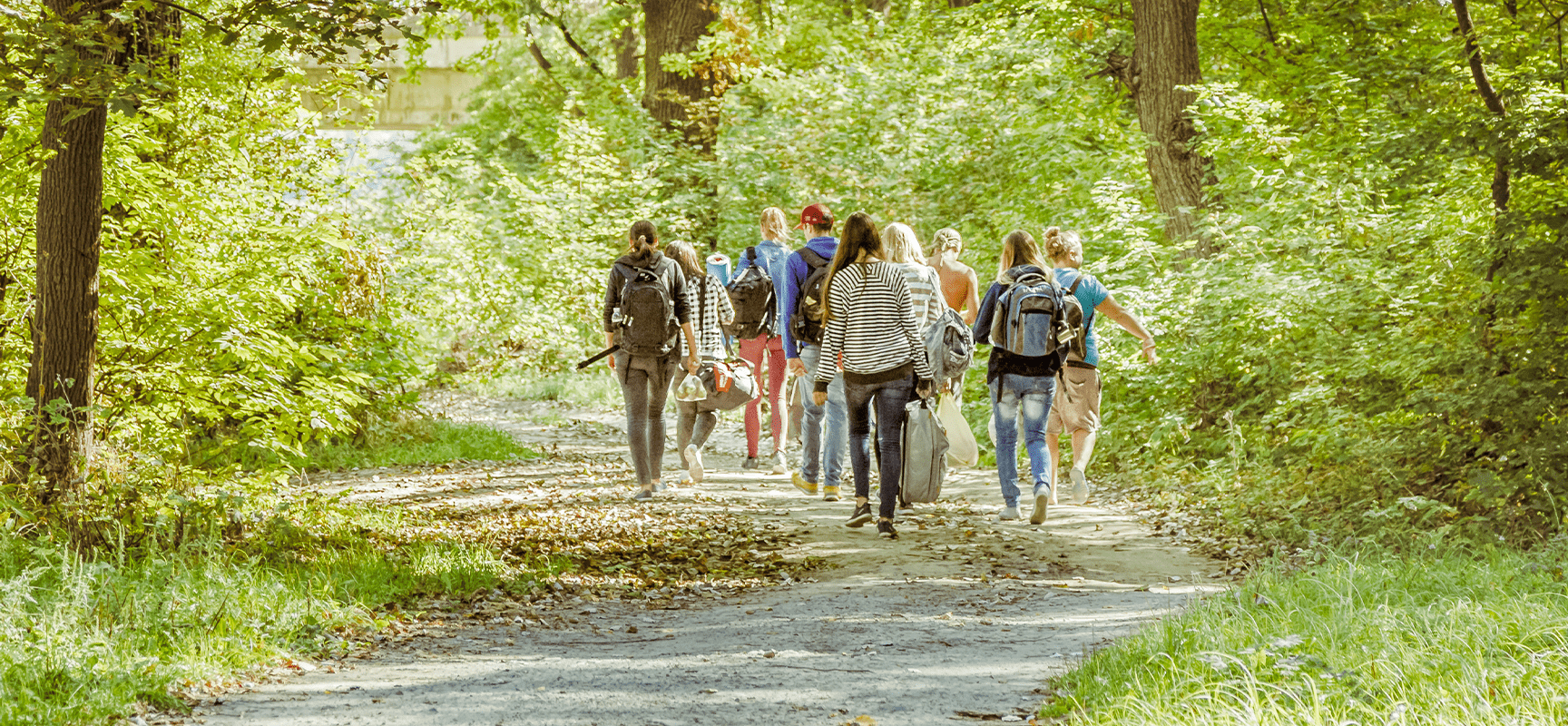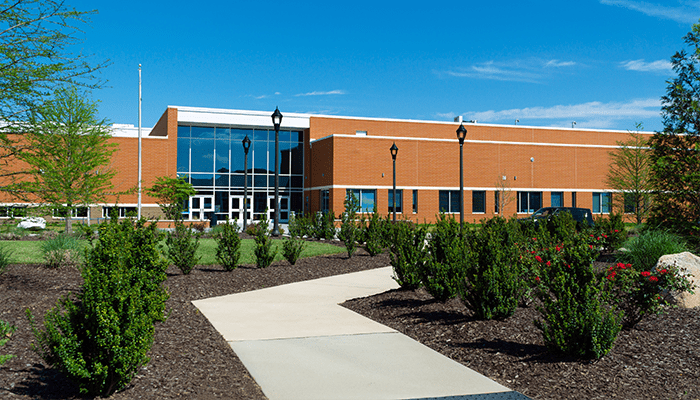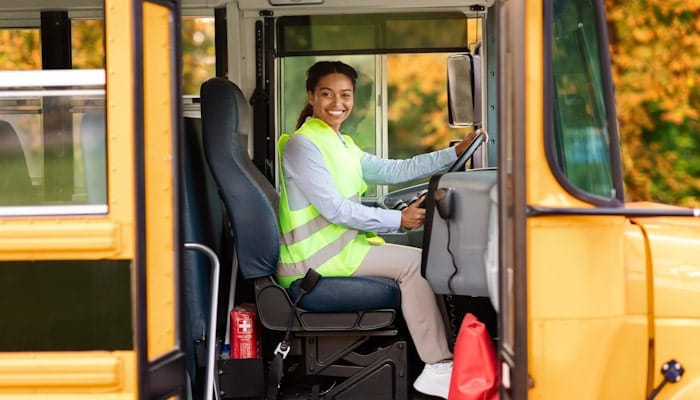
How to Manage Risks Related to Your Campus Trail System
Some of the most scenic, biodiverse, and adventurous trails are located on school campuses across the United States. If your educational institution is lucky enough to have this type of outdoor space, it has likely become one of the most popular destinations on campus for recreational activities, general health and wellness, and outdoor and experiential learning. However, while community members enjoy and explore your school’s campus trail system, they may be exposed to various risks. There is always the potential for a walker or runner to slip, trip, or fall; a hiker or mountain biker to get hurt; a snowshoer or bird-watcher to encounter dangerous wildlife; or some other unexpected issue to become a problem on the trail. Institutions need to recognize that they may be found at fault for any resulting injuries.
Regardless of whether your institution’s campus trails are for the exclusive use of your students, staff, and faculty or they’re open to the public, there are several preferred risk management practices you may want to consider adopting to help foster a safer, more enjoyable experience and limit your school’s liability.
Our team is here to help you create a safer and more enjoyable outdoor experience for all visitors. Don't wait until an accident happens, reach out today!
4 Key Areas of Your Campus Trail Safety Practices to Evaluate
Some of the contributing factors to unsafe conditions on a campus trail are inadequate signage, poor maintenance, unmarked hazards, and a lack of easily accessible and regularly updated information—all of which could be perceived as negligence on the part of the school if an accident occurs. As a result, your institution may want to perform an audit of its campus trail system and safety practices. Ideally, this review would be done seasonally for a maintained trail or twice a year for an unmaintained trail and would incorporate a review of the following four areas:
1. Trail Signage
From providing visitors with the rules and regulations of the trail to warning them of specific issues to be on the lookout for, clearly worded trail signs posted at all entrances and access points—and at multiple spots along the trail as reminders—may significantly enhance users’ experience and safety. Conversely, excessive signage may cause visitor confusion. It’s essential to carefully consider the necessary and relevant information for your specific trail system to determine which signs to consolidate, if any. Some of the trail details you may want to provide on individual signs or at a comprehensive kiosk include:
- Trail name, hours it is open, and usage guidelines, including the activities it can/cannot be used for.
- Any equipment requirements for specific activities—e.g., helmets for riders on a mountain biking trail.
- General warnings that encourage people to use caution on the trail—e.g., “Please enjoy trail at your own risk,” “Stay on assigned trails,” or “Use of the buddy system is recommended.”
- Notice that an unmaintained trail is not regularly kept up—e.g., “Attention! This trail is not maintained.”
- Specific wildlife and flora warnings—e.g., “Watch out for snakes,” “Bring a bear bell,” or “Beware of poison ivy/oak.”
- Behaviors that are strictly prohibited—e.g., hunting or trapping, camping or open fires, alcohol consumption, etc.
- Contact information for local emergency services and procedures to follow in an emergency.
- Trail map QR code that visitors can scan to download an updated digital version.
2. Trail Monitoring and Maintenance
Many factors play a role in the decision of whether to keep your campus trail system maintained, including intended uses for the trails and your institution’s capacity to perform regular upkeep.
If your school decides to leave its trails in their natural state, you may want to consider signage that notifies visitors that paths are not maintained. On the other hand, if your school has enough qualified staff and sufficient financial resources to commit to consistent trail management, this effort may result in many risk mitigation benefits, such as early intervention for common trail problems, quick identification of potential hazards, and deterrence of vandals and misuse of the trail. Ultimately, a well-monitored and maintained trail may lead to a more pleasant and safer experience for visitors. If your school decides to actively maintain its trail system, consider developing and documenting a process that includes:
- Establishing a set schedule for inspections, monitoring, and maintenance.
- Maintaining records of all inspections and maintenance work.
- Routinely checking the trail for safety issues—e.g., large branches and other tripping hazards, damaged trail signs and markers, or indications that users are going off-trail.
- Closing trails when there is a hazard that cannot be promptly corrected and providing users with safe detours.
- Posting warnings that make visitors aware of changing or challenging conditions—e.g., steep descent, loose gravel, sharp turn, danger of falling, rapid current, flood risk, etc.
- Providing accessible, fully stocked first aid stations
- Making sure trail maps, whether paper or online, reflect up-to-date trail information.
- Creating a system for trail users to report hazards or maintenance needs and a process to respond to concerns promptly.
3. User Agreements
Contrary to public opinion, mitigating a school’s liability is not the only reason to ask trail visitors to sign a liability waiver/release form or an informed consent agreement. These documents also provide users with essential information about the risks and responsibilities they are agreeing to take on while enjoying this campus property. However, getting everyone that visits your trail system to sign a waiver, liability release form, or informed consent agreement may be logistically impossible. At minimum, institutions should make sure students, faculty, and staff are aware of this requirement as well as mandate signed agreements from all participants in trail events run by outside organizations. In addition, you may want to consider adding a sign at all trail entrances and public access points notifying visitors that by using the trail, they are acknowledging and accepting the terms of the user agreement—a full version of which they should be able to easily access on your school’s website.
4. Public Trail Listings:
These days, it’s pretty much guaranteed that anyone heading to a trail will check online for current conditions and other important trail facts before they arrive. If a potential visitor is seeking closures, maps, rules, and other information about your campus trails, their search should land them on a dedicated area of your school’s website.
However, there’s also a good chance their online query might lead them to a third-party website or app, like AllTrails or the Mountain Bike Project. These popular resources welcome user-generated content, so word—and misinformation—can spread rapidly without your knowledge. It’s typically an easy process to collaborate with these third-party communities to minimize the sharing of incorrect or outdated trail information that could result in misuse or accidents.
Regularly monitoring your school's website and any third-party sites or apps is recommended, including updating the following details as needed:
- Usage and code of conduct policies.
- Trail conditions and closures.
- Downloadable campus trail map.
- Descriptions, videos, and educational shorts about the trails.
- Emergency procedures.
- Full terms of the release or waiver of liability or informed consent agreement.
The AssuredPartners Education Practice Group often collaborates with educational institutions to help them plan for a risk management audit of their campus trail systems and other outdoor features they offer, such as athletic fields, playgrounds, flower and sculpture gardens, and more. Our process typically includes assessing a school’s current safety policies and procedures and identifying proactive measures it could take to reduce threats to visitors and minimize exposure to a claim. As part of this evaluation, our team may want to carefully review a school’s insurance coverages for any gaps in liability protection and additional insured limits and requirements.
Please contact us if you would like to tap into our resources, knowledge, and experience to make sure you’re implementing effective measures to safeguard the integrity of your campus trails, the people using them, and your institution.
Related articles

At any given moment, your school buildings hold opportunities for improvement, such as enhancing air quality, reducing humidity, preventing leaks, fine‑tuning equipment, or optimizing electrical...

While it may sound like newfangled science, the U.S. has used telematics since the 1960s to track the movements of defense assets and improve military communication. Today, all types of...

Throughout their K-12 years, students with allergies typically receive substantial assistance and constant supervision from their parents/caregivers, teachers, school health professionals, and other...